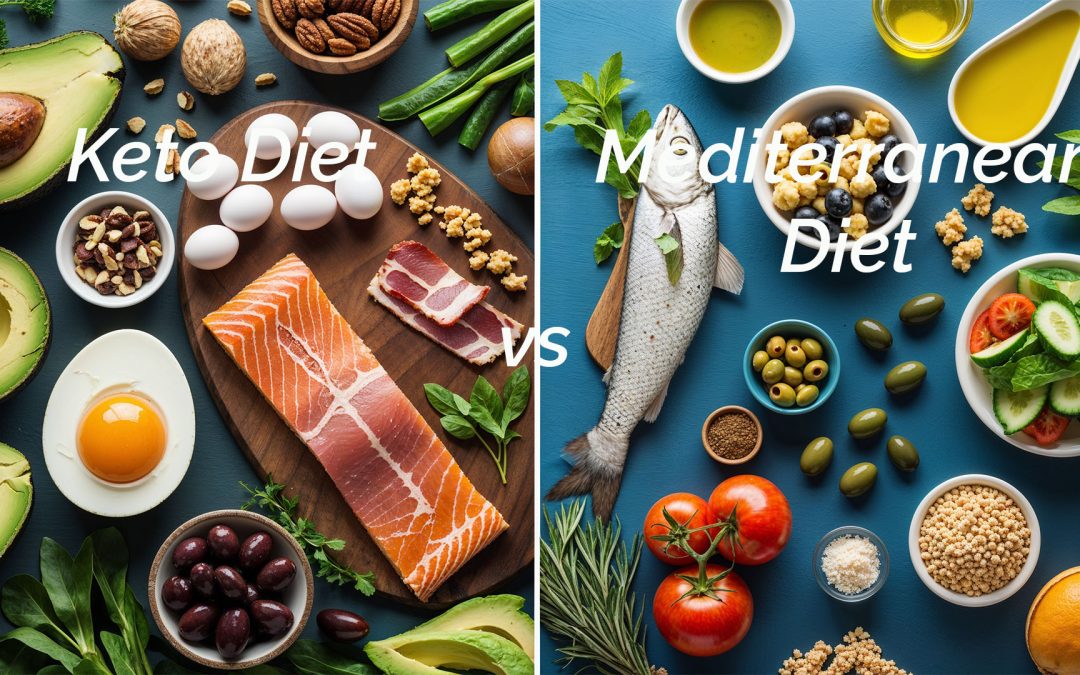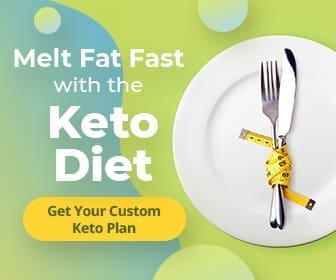
Keto vs Paleo Diet: Which One Fits Your 21st Century Lifestyle Best?
Keto vs Paleo Diet: Introduction
The Keto and Paleo diets have gained immense popularity over the past decade. Each boasts unique health benefits and dietary philosophies. As individuals strive for healthier lifestyles, understanding the nuances of these two diets becomes essential.
This article aims to provide an in-depth comparison of the Keto and Paleo diets, exploring their similarities and differences and helping you determine which might be the right fit for your health goals.
Similarities – Keto vs Paleo Diet
Focus on Whole Foods
Both the Keto and Paleo diets emphasize consuming whole, unprocessed foods. These diets advocate for natural ingredients that are free from additives and preservatives.
They encourage individuals to prioritize nutrient-dense options such as vegetables, fruits, and lean proteins and avoid processed foods high in sugars and unhealthy fats.
This focus helps create a healthier relationship with food and promotes long-term well-being.
Whole foods provide essential nutrients and support satiety, making managing portion sizes easier and promoting a healthier lifestyle.
Avoiding processed foods is a shared foundation between these two dietary approaches, as both aim to foster a deeper connection to what we eat.
Health Benefits
Both diets are linked to various health benefits, including improved metabolic health, mental clarity, and energy levels.
Research has shown that diets rich in whole foods can reduce the risk of chronic diseases such as heart disease, diabetes, and obesity. Furthermore, Keto and Paleo diets have been noted for their potential to reduce inflammation and support gut health.
Focusing on nutrient-dense foods can often improve digestion and overall well-being. This can lead to a more vibrant life as individuals consume foods that nourish and support their bodies rather than deplete them.
Differences – Keto vs Paleo Diet
Macronutrient Ratios
One of the most significant differences lies in the macronutrient ratios.
The Keto diet is characterized by a very low carbohydrate intake, typically around 5-10% of total caloric intake, with a high fat intake (about 70-80%) and moderate protein (about 20-25%). This unique ratio aims to shift the body’s metabolism into ketosis, where it primarily burns fat for fuel.
In contrast, the Paleo diet does not focus on specific macronutrient ratios. Instead, it encourages the consumption of foods available to our hunter-gatherer ancestors, thus allowing for a more balanced intake of carbohydrates, fats, and proteins.
While both diets can promote weight loss, the Keto diet does this through ketosis, while the paleo diet focuses on whole-food consumption.
Food Restrictions
Food restrictions also differ significantly between the two diets. The Keto diet strictly limits carbohydrate sources, avoiding grains, legumes, and most fruits. Instead, it promotes high-fat foods like avocados, nuts, seeds, and oils to maintain ketosis.
This restriction can make the Keto diet more challenging for those who enjoy a variety of food options.
The Paleo diet, however, allows for a broader range of foods, including fruits, vegetables, nuts, seeds, and lean meats.
The main restrictions focus on avoiding processed foods, dairy, and grains, making it more flexible and accessible for some individuals to adhere to in the long run.
Purpose and Goals
The underlying purposes of the Keto and Paleo diets also differ. The primary goal of the Keto diet is to achieve ketosis for enhanced fat-burning and weight loss.
This can be particularly beneficial for those looking to manage conditions like obesity, diabetes, or epilepsy. The focus is heavily on macronutrient ratios to induce this metabolic state.
Conversely, the Paleo diet aims to promote overall health and wellness by encouraging a return to traditional eating habits. It emphasizes the quality of food and the avoidance of modern processed foods.
While weight loss can be a natural outcome, the primary focus is on long-term health benefits rather than rapid weight loss.
Detailed Comparison: Keto vs Paleo Diet
Carbohydrate Intake
Carbohydrate intake is a defining factor that sets the two diets apart—the Keto diet advocates for a drastic reduction in carbohydrates, often less than 50 grams daily.
This limitation is designed to push the body into ketosis, a metabolic state where fats, rather than carbohydrates, become the primary energy source.
The Paleo diet, on the other hand, does not impose strict carb limits. While it encourages the consumption of lower-glycemic fruits and vegetables, individuals can adjust their carbohydrate intake based on personal preferences and activity levels, making it more adaptable to various lifestyles.
Fats and Proteins
The Keto diet emphasizes high-fat sources, including saturated fats, which may concern some individuals regarding heart health. The focus is on using fats as the primary source of energy, which can lead to the consumption of more fatty meats and oils.
The Paleo diet encourages healthier fat sources, such as olive oil, avocado, and nuts, steering away from the saturated fats that the Keto diet promotes.
Protein consumption in the Paleo diet is often derived from grass-fed meats and wild-caught seafood, aligning with its natural eating philosophy.
Allowed Foods
The distinctions between allowed foods are clear.
The Keto diet permits high-fat foods such as butter, cream, and fatty cuts of meat while strictly avoiding grains, legumes, and high-carb fruits like bananas and apples. This focus creates a specialized menu that revolves around fat intake.
The Paleo diet offers a broader range of allowable foods, including many fruits, vegetables, nuts, and lean meats. This flexibility can make the Paleo approach more appealing to those seeking a diverse diet without strict limitations.
Long-term Sustainability
Sustainability is a critical aspect when choosing between Keto and Paleo.
The restrictive nature of the Keto diet can make it challenging for some individuals to stick with it long-term, especially if they crave carbohydrates or find social situations difficult.
The rigid macronutrient ratio might feel overly restrictive for those who enjoy a variety of foods.
On the other hand, the Paleo diet’s flexible nature may allow for better long-term adherence.
By offering a wider selection of foods and not imposing strict carb limits, the diet may be easier for individuals to incorporate into their lives without feeling deprived.
Considerations When Choosing a Diet: Keto or Paleo?
Personal Health Goals
⚠️ Consider your personal health goals when deciding between the Keto and Paleo diets.
If rapid weight loss and fat burning are your primary objectives, the Keto diet may be more effective due to its carbohydrate restrictions and emphasis on ketosis.
However, if your goals are centered around overall health, well-being, and sustainable eating habits, the Paleo diet might be better suited for you.
It’s essential to identify what you hope to achieve through dietary changes. Understanding your motivations will guide you in selecting the diet that aligns with your lifestyle and health aspirations.
Dietary Restrictions – Keto vs Paleo Diet
Another consideration is any dietary restrictions you may have. For instance, individuals with certain medical conditions, such as diabetes, may find the Keto diet beneficial due to its potential for stabilizing blood sugar levels.
Conversely, those sensitive to dairy or grains might resonate more with the Paleo diet, which eliminates these foods.
⚠️ Consulting with a healthcare professional or a registered dietitian can provide personalized guidance based on your specific needs and restrictions, ensuring a more informed choice between the two diets.
❓ 10 FAQs – Keto vs Paleo Diet
1. Can I lose weight on both diets?
Yes. Both diets can lead to weight loss, but they approach it differently. Keto induces ketosis for fat burning, while Paleo emphasizes whole foods that reduce calorie intake.
2. Is one diet healthier than the other?
A.: It depends on your goals. Keto is effective for fast weight loss but can be hard to sustain. Paleo promotes whole foods and may be easier to follow long-term.
3. Are there any side effects of the Keto diet?
A.: Yes. Some experience “Keto flu”: fatigue, headaches, irritability. Staying hydrated and maintaining electrolytes helps alleviate symptoms.
4. Can I combine elements of both diets?
A.: Yes. Many blend Paleo’s food quality with Keto’s carb restrictions to create a custom plan that’s sustainable and effective.
5. Is dairy allowed in these diets?
A.: Paleo generally avoids dairy. Keto includes it for fat content, though some avoid it due to sensitivities or inflammation.
6. Which diet is better for athletic performance?
A.: Paleo, with its higher carbs, supports high-intensity training. Keto may benefit endurance athletes by promoting fat adaptation.
7. Can vegetarians follow these diets?
A.: It’s challenging. Vegetarian Keto requires careful fat/protein planning. Paleo vegetarians rely on eggs, nuts, and non-legume plants.
8. Do these diets require calorie counting?
A.: Not strictly. Keto focuses on macros; Paleo on food quality. However, being aware of calories still helps with weight management.
9. Are these diets safe for long-term use?
A.: Paleo is often considered safer long-term due to food diversity. Keto should be monitored, especially with underlying conditions.
10. Can these diets help with inflammation?
A.: Yes. Both reduce sugar and processed foods. Paleo is particularly rich in anti-inflammatory ingredients like leafy greens and healthy fats.
Conclusion and Summary – Keto vs Paleo Diet
Final Thoughts:
In summary, the Keto and Paleo diets offer unique advantages and challenges.
The Keto diet focuses on achieving ketosis through a strict low-carb, high-fat approach, while the paleo diet emphasizes whole, unprocessed foods and offers more flexibility regarding macronutrient ratios.
Ultimately, the best choice depends on your health goals, lifestyle preferences, and dietary needs.
Whether you gravitate towards Keto for its rapid weight loss potential or to Paleo for its balanced approach to nutrition, understanding these diets will empower you to make informed dietary choices.
Additional information about the Keto and Paleo Diets:
If my Keto vs Paleo Diet article wasn’t convincing enough in comparison, then learn more about each diet. You can visit the following pages, where you will find more detailed information:
- 📗 Keto Diet Plan: How to Burn Fat with a High-Fat, Low-Carb Lifestyle ⬈
- 📗 Paleo Diet Plan: 21st Century Healthy Living the Way of Our Ancestors ⬈
However, before you seriously embark on any proven diet plan, it’s worth looking at other dietary options. The most well-known can be found on my website (visit Discover the Best-Known, Proven Diet Plans for the 21st Century 🔗⬈).
Thanks for reading.



